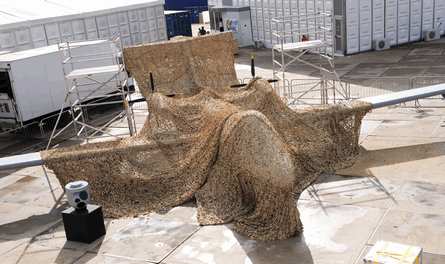BAE Systems will today undertake what it calls a ‘product’ reveal in its static park. This event is tied in with the company’s growing involvement in Unmanned Air Systems, and will see the unveiling of a mockup of a new UAV.
This is believed to be BAE Systems’ new Mantis medium altitude long-endurance (MALE) UAV. Mantis is understood to be the result of a joint BAE/MoD study concept, and may be offered to meet the UK requirement for a deep and persistent capability within the over-arching Dabinett programme.
Mantis is understood to be an indigenous alternative to Predator and Reaper, and thus represents a continuation of BAE Systems’ efforts to break into an increasingly lucrative UAV market. The aircraft is intended for close air support and ISTAR intelligence, surveillance, target acquisition and reconnaissance roles.
 |
|---|
This is, however, a sector in which many within the Strategic UAV Experiment (Suave) project team hope to build a long-endurance capability based around the General Atomics Reaper (Predator-B), which is already in service with the RAF’s No.39 Squadron.
The Mantis mockup is lurking underneath camouflage netting next to the BAE Pavilion (Hall 5), while a model of the design is inside the BAE exhibit – albeit shrouded in a low-tech black plastic bin-liner on Saturday and Sunday!
The life-size model has an unusual configuration, with a low-mounted high aspect ratio wing reminiscent of that of the Predator and Reaper, but with a T-tail and twin engines mounted on slender stub wings on the upper ‘corners’ of the fuselage. Each engine drives a small diameter four bladed pusher propeller. The tricycle undercarriage is relatively short, giving rather less ground clearance than that of the Predator, and the aircraft appears to have a ventral radome under the centre-section, with FLIR/sensor balls fore and aft.
The aircraft is displayed carrying single 500lb Enhanced Paveway IV dual mode GPS/laser guided bombs on its underwing pylons, though triple clusters of Hellfire missiles appear to be displayed adjacent to these, perhaps suggesting an alternative close air support loadout.
Source: Flight International



















